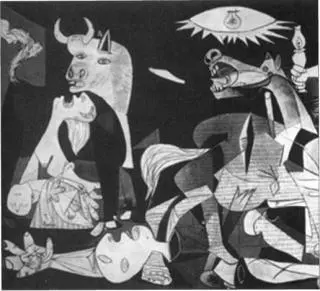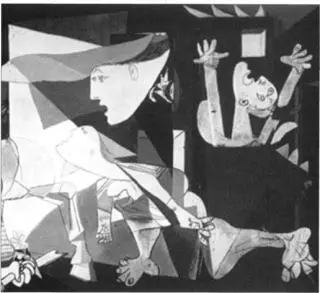They were wrong. Like most scientists of the day, they erroneously believed that all nuclear reactions—even when produced by the neutron—were small. Thus, when a new element was formed, it differed from the original by only a few protons or neutrons. It did not occur to them that they were observing the results of something much more dramatic. Fermi had not created transuranics; he had split the nucleus of uranium, thereby creating lighter elements lower down in the periodic table.
Only one scientist scented what the new discoveries might mean. In September 1934 German chemist Ida Noddack, the co-discoverer of rhenium, the last naturally occurring element to be identified, published an article challenging Fermi’s claim to have created transuranics. She suggested it was “conceivable that when heavy nuclei are bombarded by neutrons, the nuclei in question might break up into a number of pieces, which would no doubt be isotopes of known elements but not neighbors of the irradiated elements.” In other words, it was perfectly possible for the nucleus of a heavy atom such as uranium to shatter, releasing far more energy than most scientists believed and transmuting into much lighter elements. She was on the brink of revealing nuclear fission.
However, Noddack did not pursue the thought, and nobody else paid any attention. Emilio Segre wrote in later years of his enduring amazement that no one had taken Noddack’s article seriously: “It said that fission was observed. Fermi and I read it and we still didn’t discover fission. The whole story of our failure is a mystery to me.” Ida Noddack was ignored partly because she was a woman. The respect afforded to Marie Curie and Lise Meitner was the exception. Even they had often been marginalized. Long before the Nazis came to power, editors had refused to publish Meitner’s papers on the grounds that she was female. In group photographs of workers at her institute she was often placed at the back or to one side, or even omitted altogether.
Of perhaps greater significance, though, was Noddack’s lack of credibility. In 1925 Ida Tacke, as she then was known, and her future husband, chemist Walther Noddack, had claimed to have discovered an element, “masurium,” but later could not substantiate it. Emilio Segre himself considered them worse than incompetent, believing they had been “plain dishonest.” Lise Meitner had been one of their greatest critics and felt no inclination, a decade later, to pay attention to Ida Noddack’s work. Otto Hahn was equally dismissive. When Ida Noddack asked him at least to refer in his lectures and papers to her criticisms of Fermi’s work, he replied that he did not wish to make her look ridiculous. Her “assumption of the bursting of the uranium nucleus into larger fragments,” he said with crushing emphasis, “was really absurd.”
SEVEN
“WONDERFUL FINDINGS”
WHILE SCIENTISTS BICKERED and debated, the international situation was worsening. In Spain in 1936, civil war had broken out between the Republican government and General Francisco Franco’s rebel junta. The Soviet Union supported the Republicans, and Fascist Germany and Italy backed the junta, sending arms and men and, in particular, “volunteers” from their air forces. On Monday, 26 April 1937, German and Italian bombers, including the new German Heinkel 111s and Dormier 17s, attacked the historic Basque capital of Guernica for three hours during the weekly market. Guernica had no air defenses, and so the planes flew low, bombing and machine-gunning with impunity. One survivor remembered “a sapphire blue light” as incendiaries exploded. Another, a child, recalled, “You could see the heads of the flyers, see they were German planes…. the next day the town was still burning in some places and there were corpses in the street.” According to the Basque government, 1,645 people died out of about 10,000, including 3,000 refugees, in the town. The presence of foreign reporters near the town gave the bombing immediate, appalled prominence. Pablo Picasso’s painting gave it immortal infamy.


Picasso’s Guernica
In 1936 the Japanese government signed the Anti-Comintern Pact with Nazi Germany: Italy joined a year later. In so doing Japan allied itself firmly with the rising European dictatorships and against the Western democracies, aiming to create a new order in the East as they did in the West. It was not long in taking further practical steps to achieve this goal. In July 1937 the Japanese turned their encroachment into China, resumed six years earlier in Manchuria, into a full-scale war of conquest.
Many inhabitants of Hiroshima considered this war “a Holy Crusade,” and Hiroshima’s port was once more filled with warships and transports bound for China. Local residents lined the streets to give a rousing send-off to the departing troops of the Fifth Division, based in the city’s castle. Later they bowed their heads in somber respect as returning soldiers paraded down silent streets with white boxes around their necks containing the ashes of fallen comrades. In December 1937 the people of Hiroshima celebrated the capture by Japanese troops of Nanking—the capital of Nationalist China—with a massive lantern parade. They then gathered outside the city hall to listen to a military band. Pictures showed numerous women and children among the crowds.
Strict government censorship kept them from learning that the behavior of the Japanese troops after the fall of Nanking had been barbarous. Ninety thousand Chinese soldiers who had surrendered under promise of fair treatment were killed, many of them bound and used for bayonet practice. A Japanese soldier wrote that among the civilians “women suffered most…. we sent out coal trucks to the city streets to seize a lot of women. And then each of them was allocated to 15 to 20 soldiers for sexual intercourse and abuse. After raping we would also kill them.” Some two hundred thousand of the city’s civilian population of around half a million are estimated to have been killed, in addition to the ninety thousand surrendered prisoners. The commander of the victorious Japanese forces announced, “The dawn of the renaissance of the East is appearing.”
Both Britain and the United States protested at the rape of Nanking but took no firm action; nor did they do so after the Japanese bombed Shanghai in September 1937. However, the U.S. government condemned such bombing in the following words: “The American Government holds the views that any general bombing of an extensive area, where there resides a large population engaged in peaceable pursuits is unwarranted and contrary to principles of law and humanity.”
That summer, Emperor Hirohito authorized “special chemical warfare units” to be sent to the Asian mainland. The Japanese were to use poison gas against the Chinese on many occasions. They also used bacteriological weapons, releasing rats infected with the plague and other toxins. When rats were released in the wrong place, sixteen hundred Japanese troops became infected and died.
• • •
At the Curie Laboratory, Irene Joliot-Curie was driving herself and her team unsparingly. After her husband, Frederic, was appointed professor at the College de France in Paris, where he built a laboratory dedicated to nuclear physics and began work on a thirty-two-inch cyclotron, she worked closely with a Yugoslav colleague, Pavel Savitch. In late 1937 they announced that, by bombarding uranium with neutrons, they had found a substance that remained radioactive for more than three hours. Over the coming months they published a series of explanations of what this highly active material might be: First they suggested thorium, then actinium, then a transuranic with the chemical properties of lanthanum. Otto Hahn and Lise Meitner, deep in their own investigation of transuranics and skeptical of both the Paris team’s techniques and their findings, dubbed it “curiosium.” Lise Meitner thought that Irene Joliot-Curie was “still relying on the chemical knowledge she received from her famous mother and that knowledge is just a bit out of date today.” Hahn remarked less delicately of some of Irene Joliot-Curie’s results, “This damned woman. Now I will have to waste six months proving that she was wrong.”
Читать дальше














